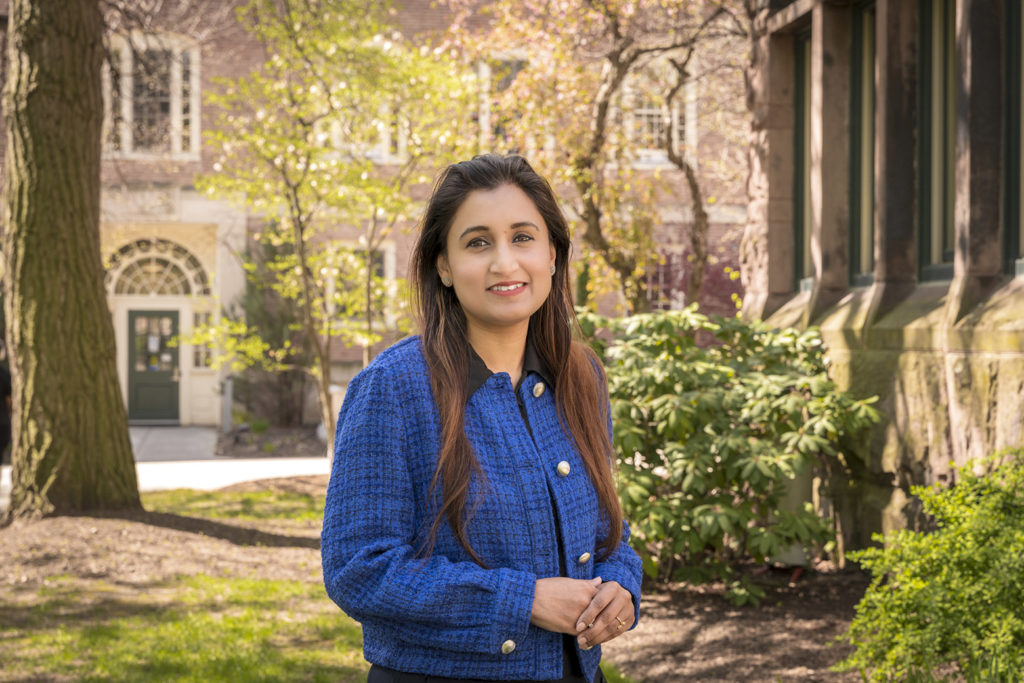
Associate Professor of Physical Therapy Rupali Singh has conducted clinical research in the areas of physical therapy and Type 2 diabetes for more than 15 years, first at the University of Kansas Medical Center and since 2013 at Russell Sage College.
Her newest investigation is a pilot study of the effects of laser therapy on painful diabetic peripheral neuropathy.
Her study is supported by a grant from the 2023 Arthur J. Nelson Research Designated Fund, awarded by the American Physical Therapy Association New York Research Committee.
In this Q & A she describes her study and the opportunities it offers to her student research assistants from Sage’s DPT program. She also shares how individuals with painful diabetic peripheral neuropathy can participate.
Tell me about your pilot study of laser therapy for diabetic peripheral neuropathy.
People who have diabetes are also struggling with some issues that are going on with the nerves, like tingling and numbness. Along with these issues, there is pain. Pain is a common concern in people who have diabetic peripheral neuropathy, which is a complication resulting from diabetes.
Medical treatments are available, but people only want to take a few medicines because of the side effects associated with these medicines.
As a researcher and physical therapist, I am interested in how we can help with the painful aspect of DPN. This made me dig into other non-pharmacological treatment options. I looked into electrotherapeutic modalities and decided to investigate low-level laser therapy to treat painful DPN, an emerging novel technique.
We are investigating if laser therapy can decrease pain in people with painful DPN. Painful DPN is associated with functional impairment and can result in gait instability, increasing the likelihood of losing balance. So, we are also interested in understanding the effects of laser therapy on gait measures and balance.
How did you become interested in the laser therapy’s potential as a treatment for painful diabetic neuropathy?
I have been a researcher for the last 15 years and my line of research is Type 2 diabetes.
Since I’m a physical therapist and a researcher, I am always interested in investigating other ways besides medicines to manage chronic conditions like diabetes. How can we use exercise, or physical agents like laser therapy to manage the condition?
When I started teaching, one of the topics covered in my course was physical agents used in physical therapy practice. Laser therapy is a modality that uses light as a source of therapeutic intervention. Laser therapy is an emerging technique that can hold the potential for treating many chronic conditions. Research on laser therapy is limited. Physical therapists usually treat individuals with diabetes for pain, balance, and gait impairments. The results of our study can provide another tool for physical therapists to treat painful neuropathy.
Where are you in the research now, and what’s to come?
We are in the initial phases of a research study. The Institutional Review Board has approved it, and we are getting ready to start our data collection.
[NOTE: Federal and state regulations require IRB approval, to protect the rights of human research subjects.]
We are finalizing the data collection site and gathering other equipment required for the research project besides the laser therapy unit. We are trying to get participants who may be interested in our research.
By the end of spring semester 2024, I’d like to collect data from 20 participants. Our target sample size is 20 participants.
Are students from Sage’s DPT program assisting you?
Yes! There are eight students who are working with me. I am very grateful for the help I will receive from student-investigators.
Students are given some outcome measures to work on from the research study. They will collect data and analyze the data on these outcome measures. This will be their capstone project. They will be writing their research report on the assigned outcome measure.
They will finally present their capstone project at the department’s research symposium at the end of their second year.
How will having this kind of research experience on their resumes help your DPT students stand out for future opportunities?
In our curriculum, students are required to work on a capstone project, which is considered as a culminating research experience. After getting the basic knowledge from research courses, they get to conduct a research study. The current research project is helping the students work on their capstones and will allow them to take it to the next level where they can present the work at state and national level conferences if accepted. Finally, we will try to get a publication out of the research study.
After the students graduate, they will become clinicians. They will be clinicians who will have a background knowledge of evidence behind their interventions to treat different conditions. The current research study is creating evidence for the treatment of painful DPN. They will learn this tool of how a gap was identified and how the evidence was created. They will follow the same path and become evidence-based practitioners.
Is there anything that you would like to add?
We are looking for subjects! We are looking for people age 40 to 70 who have Type 2 diabetes and who have pain, numbness, and tingling in their feet.
We are compensating our research participants’ time and participation with this grant — they are being paid to be in my research study.
It’s a four-week commitment. Participants will have to come to the Russell Sage College campus in Troy three times a week for four weeks.
It’s 12 sessions, but they are brief sessions, 15 minutes.
Participants will receive free laser therapy!
People who are interested can email me at [email protected] for more information.

